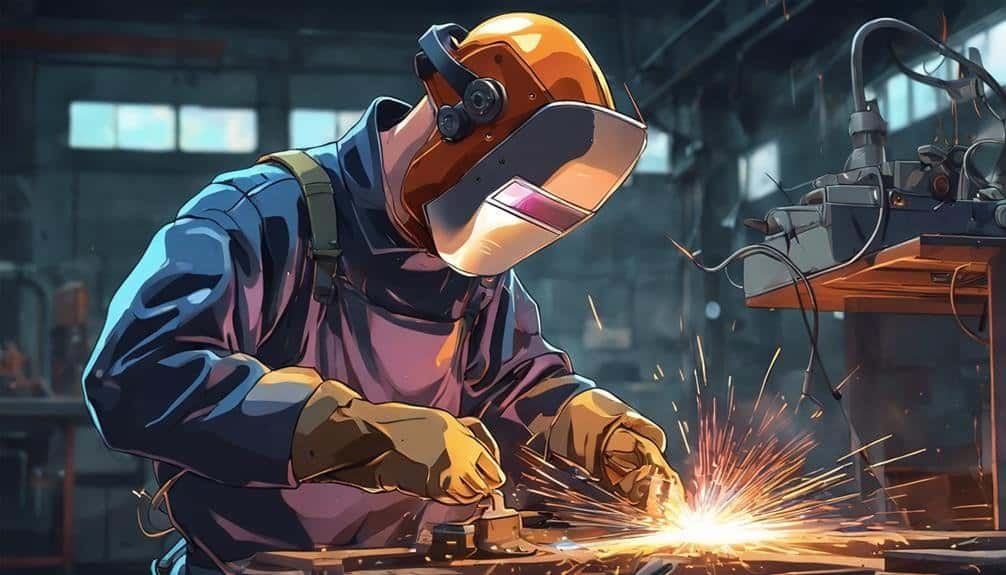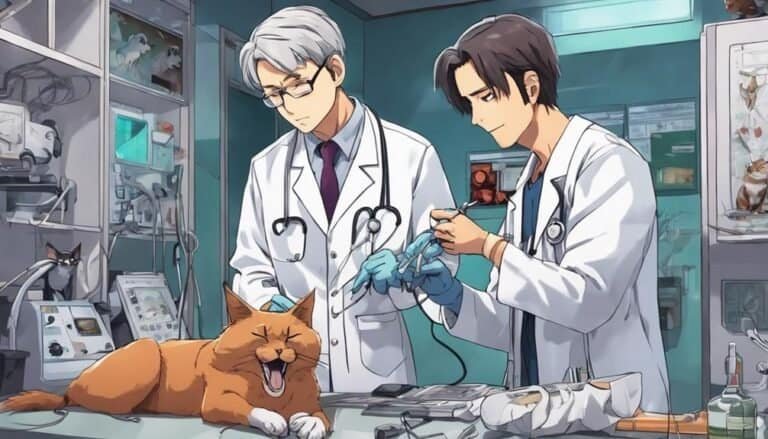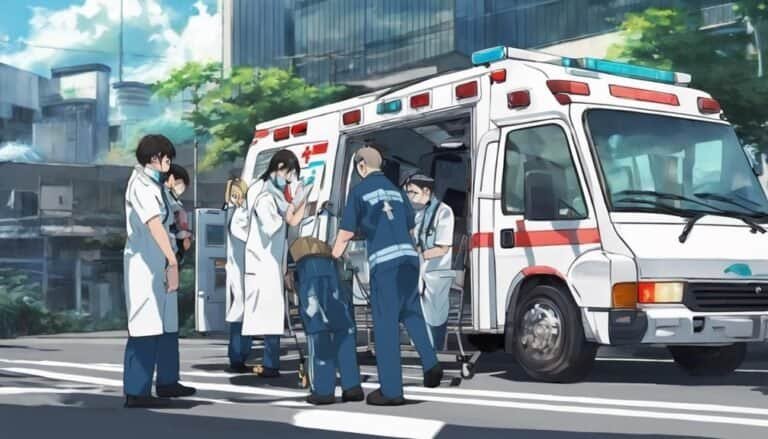Job Duties for Welder
|
Getting your Trinity Audio player ready...
|
In the world of welding, a welder's role encompasses a diverse range of responsibilities that require skill, precision, and attention to detail. From interpreting intricate blueprints to meticulously joining metal components, welders play an essential part in various industries.
The ability to operate welding equipment safely and conduct quality inspections is paramount, ensuring the integrity and durability of the finished product. However, these duties merely scratch the surface of what it truly means to be a welder. The intricacies and challenges of this profession go far beyond the surface, requiring a unique blend of technical expertise and creative problem-solving skills.
Key Takeaways
- Reading blueprints accurately and planning welding sequences based on them is crucial.
- Prioritizing welding safety measures like equipment maintenance and hazard awareness is essential.
- Understanding different types of welds and certification requirements is key to success in welding.
- Maintaining welding machinery, collaborating effectively, and problem-solving are vital aspects of a welder's job.
Reading and Interpreting Blueprints
When working as a welder, a vital skill involves the ability to accurately read and interpret blueprints to guarantee precise execution of welding tasks. This includes understanding welding symbols and analyzing blueprint layouts to assure that the welding process aligns with the specifications provided. Welding symbols are essential as they convey important information such as the type of weld required, dimensions, and other important details for the welder to follow.
Analyzing blueprint layouts is an important task that requires attention to detail. Welders must be able to interpret dimensions, welding symbols, and other annotations to determine the exact locations where welds need to be made. Additionally, understanding the blueprint layout is crucial for planning the welding sequence and ensuring that the final product meets the required specifications.
Selecting and Preparing Materials
In the welding profession, selecting and preparing materials are vital steps to guarantee the quality and integrity of the final product.
The material inspection process involves carefully examining the properties and dimensions of the metals to be joined.
Understanding various metal cutting techniques and surface cleaning methods is essential for achieving strong and durable welds.
Material Inspection Process
During the material inspection process for welding, meticulous attention is given to selecting and preparing the appropriate materials to guarantee the integrity and quality of the weld.
- Material Testing Methods: Various techniques like x-ray inspection, ultrasonic testing, and dye penetrant inspection are utilized to assess material quality.
- Inspection Standards: Adherence to industry standards such as AWS D1.1 ensures the materials meet specific criteria for welding.
- Welding Material Compatibility: Ensuring that the materials selected are compatible regarding composition, thickness, and metallurgical properties is critical.
- Quality Control: Implementing rigorous quality control measures throughout the material inspection process helps maintain the weld's strength and durability.
Metal Cutting Techniques
Metal cutting techniques play an important role in the process of selecting and preparing materials for welding, ensuring precision and compatibility for successful welds. When it comes to gas welding techniques, welders commonly use oxy-acetylene systems to cut through metal. Safety precautions such as wearing appropriate protective gear and ensuring proper ventilation are essential during this process.
Additionally, plasma cutting methods are preferred for their precision and efficiency in cutting various metals. Proper material handling is vital to maintain the integrity of the materials before welding. By mastering these metal cutting techniques and adhering to safety guidelines, welders can effectively prepare materials for welding projects, leading to high-quality and durable welds.
Surface Cleaning Methods
Surface preparation is a critical aspect of welding, with proper cleaning methods being essential for guaranteeing best material integrity and successful welds.
- Rust removal techniques: Abrasive blasting is commonly used to eliminate rust and mill scale from the surface of metals, providing a clean base for welding.
- Chemical cleaning methods: Solvent degreasing involves using chemicals to dissolve and remove oils, grease, and other contaminants from the metal surface before welding.
- Thoroughly clean the surface to eliminate any dirt, paint, or coatings that could impede the welding process.
- Make sure the work area is well-ventilated when using chemical cleaning methods to prevent inhalation of fumes and follow appropriate safety protocols.
Operating Welding Equipment Safely
Ensuring the safe operation of welding equipment is paramount in maintaining a secure work environment and preventing accidents. Welders should possess proper welding certifications to demonstrate their competence in handling welding equipment safely. Adhering to safety precautions such as wearing appropriate protective gear, ensuring proper ventilation, and following established protocols is essential in preventing injuries and accidents.
Proficiency in various welding techniques is essential for operating welding equipment safely. Welders must be knowledgeable in techniques such as MIG welding, TIG welding, and stick welding to effectively and safely join metal pieces together. Additionally, regular equipment maintenance is key to ensuring the safe operation of welding tools. This includes inspecting equipment for any signs of wear or damage, replacing worn-out parts, and ensuring that all components are functioning correctly.
Joining Metal Pieces Together
To effectively join metal pieces together, welders must master a variety of welding techniques and guarantee the proper maintenance of welding equipment. Welding is a critical process that requires precision and skill to ensure the structural integrity of the final product.
Here are some key aspects to keep in mind when joining metal pieces together:
- Welding Techniques: Welders need to be proficient in various welding techniques such as MIG (Metal Inert Gas), TIG (Tungsten Inert Gas), and stick welding to accommodate different types of metal and project requirements.
- Troubleshooting Methods: Being able to identify and address welding issues like porosity, cracks, or incomplete fusion is important for maintaining the quality of the weld and the overall integrity of the metal structure.
- Metal Joining: Understanding the properties of different metals and how they interact during the welding process is essential to achieve strong and durable bonds between metal pieces.
- Structural Integrity: Making sure that the welded joints meet specifications and standards is paramount to guarantee the structural integrity and safety of the finished product.
Conducting Quality Inspections
Upon completion of the welding process, a meticulous and thorough quality inspection is conducted to guarantee adherence to industry standards and specifications. The inspection process involves a detailed examination of the welded joints to identify any welding defects and ensure the structural integrity of the workpiece. Welding standards play an essential role in this phase, guiding the quality control measures implemented during the inspection.
—
| Welding Defects | Inspection Process |
|---|---|
| Porosity | Visual Inspection |
| Cracks | Non-Destructive Testing (e.g., Ultrasonic Testing) |
| Lack of Fusion | Dye Penetrant Testing |
| Undercutting | Radiographic Testing |
| Incomplete Penetration | Dimensional Inspection |
—
Conducting quality inspections is an important aspect of a welder's responsibilities, ensuring that the finished product meets the required quality standards. By following stringent inspection protocols and addressing any welding defects promptly, welders uphold the integrity and safety of the welded structures.
Performing Welding Techniques
When performing welding techniques, welders must adhere to strict safety measures to prevent accidents and injuries. Understanding the different types of welds, such as fillet welds and groove welds, is essential for achieving strong and durable weld joints.
Proficiency in selecting the appropriate welding technique for each specific job guarantees high-quality workmanship and successful project completion.
Welding Safety Measures
Implementing welding safety measures is crucial when performing various welding techniques to guarantee a safe working environment for both the welder and those in the vicinity.
- Welding Fume Protection: Always use proper ventilation systems, respiratory protection, and follow safety guidelines to minimize exposure to harmful welding fumes.
- Equipment Maintenance: Regularly inspect and maintain welding equipment to make sure it functions correctly and reduces the risk of accidents.
- Emergency Response: Be prepared to handle emergencies by having a well-defined emergency plan, including knowing the locations of emergency exits and first aid kits.
- Hazard Awareness: Continuously assess your work environment for potential hazards, such as flammable materials, electrical dangers, or confined spaces, to prevent accidents and injuries.
Types of Welds
Executing various welding techniques requires a deep understanding of the different types of welds commonly utilized in the welding process. Welding applications vary, and each type of weld serves a specific purpose.
Some common types of welds include fillet welds, groove welds, plug welds, and more. Fillet welds are commonly used for lap joints and T-joints, while groove welds are ideal for joining two pieces that are parallel or nearly parallel.
Plug welds involve making a hole in one of the pieces to be joined and welding the other piece to it through the hole. Understanding these weld types is essential for welders aiming to obtain welding certifications, as different certifications may require proficiency in specific welding techniques.
Following Safety Protocols
Adhering strictly to safety protocols is paramount for welders to maintain a secure working environment. To guarantee the safety of both themselves and those around them, welders must prioritize the following key aspects:
- Welding Attire and Safety Equipment: Proper protective gear such as welding helmets, gloves, and flame-resistant clothing must be worn at all times to prevent burns, electrical shocks, and exposure to harmful fumes generated during the welding process.
- Hazardous Material Disposal: It is vital for welders to correctly dispose of hazardous materials such as used electrodes, slag, and other waste products to prevent environmental contamination and health hazards.
- Ventilation Systems: Adequate ventilation systems should be in place to remove welding fumes and gases from the work area, reducing the risk of respiratory issues and ensuring a healthier workspace for all individuals present.
- Regular Safety Inspections: Conducting routine safety inspections of equipment, tools, and workspaces helps identify potential hazards early on, allowing for timely intervention and prevention of accidents or injuries.
Maintaining Welding Machinery
To guarantee peak performance and longevity of welding machinery, meticulous maintenance practices must be rigorously followed. Welding equipment maintenance is essential to make sure that all components are in prime condition.
Regular inspection of welding machines for wear and tear, loose parts, or signs of damage is important. Troubleshooting issues promptly can prevent costly repairs or downtime. Welding machine repair should be carried out by qualified personnel to uphold safety standards and equipment specifications.
Calibration of welding machinery is another crucial aspect of maintenance to guarantee accurate and consistent welds. Proper calibration ensures that the settings align with the required parameters for the specific welding job.
Collaborating With Team Members
Interacting effectively and cooperatively with team members is important for ensuring seamless workflow and successful completion of welding projects. When collaborating with team members in a welding environment, several key aspects come into play:
- Understanding Team Dynamics: Being aware of each team member's strengths, weaknesses, and working styles is essential for fostering a harmonious and productive team environment. Recognizing how to best utilize each individual's skills can greatly enhance project outcomes.
- Project Coordination: Efficiently coordinating tasks, timelines, and resources among team members is essential for meeting project deadlines and delivering high-quality results. Clear delegation of responsibilities and regular progress updates help keep everyone on the same page.
- Communication Skills: Effective communication is paramount in ensuring that all team members are informed of project requirements, changes, and updates. Clear and concise communication helps prevent misunderstandings and promotes collaboration.
- Problem-Solving Techniques: Collaborating with team members to troubleshoot issues and overcome challenges is a fundamental aspect of successful welding projects. Utilizing collective problem-solving skills can lead to innovative solutions and improved project outcomes.
Conclusion
To summarize, welders play a vital role in various industries by:
- Reading blueprints
- Selecting materials
- Operating equipment safely
- Joining metal pieces
- Conducting quality inspections
- Performing welding techniques
- Following safety protocols
- Maintaining machinery
- Collaborating with team members
According to the American Welding Society, the demand for welders is expected to grow by 6% from 2018 to 2028, highlighting the importance of skilled professionals in this field.







